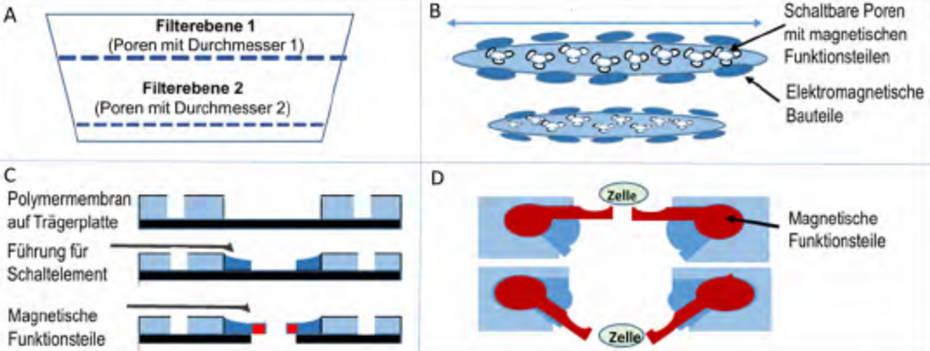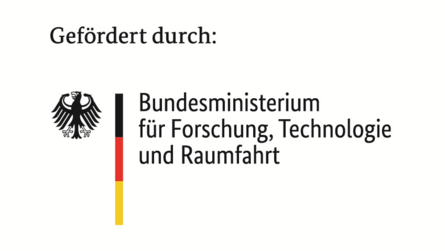
(A) to (D): Schematic gradient filter principle
(A) Cross-section through the filter planes in a column. (B) Top view of two filter planes. These have a narrow shape in order to utilize the maximum possible field strength. (C) Manufacturing diagram for the filter planes (cross-section). A switchable pore is shown in the center. Additional bypass pores are provided on the left and right to allow smaller cells to pass through. (D) Principle of magnetic pore switch (cross-section): At the top, the magnetic functional parts are set so that the pore is not continuous for the larger cells; at the bottom, the cells can pass through.
3D-Life - Research Space for High-Precision 3D Microstructuring for Applications in Life Sciences and Medical Technology
The project 3D-Life focuses on developing innovative three-dimensional microstructures and switchable microfilters for advanced cell research. Using Two-Photon Lithography (2PL), highly precise 3D components can be fabricated, creating near-natural environments for cell culture and enabling improved cellular analysis.
A key element is the development of magnetically switchable microfilters whose pore size can be adjusted in real time. These filters allow gentle, fast, and precise separation of blood, immune, and other cell types—either directly on a microfluidic chip or within a column for larger sample volumes. This opens new possibilities for diagnostics, cancer and immunology research, and various biotechnological applications.
In parallel, a digital technology platform with multimedia teaching modules and a Virtual Technology Laboratory is being created, allowing learners to simulate micromanufacturing processes. A new 3D-Life Research College will integrate these activities and support the training of early-career researchers.

Project manager
Details
BMFTR
Duration01.01.2026 - 31.12.2029